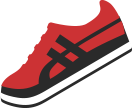-
Problem
Smith, S.G., Chen, J., Basile, K.C., Gilbert, L.K., Merrick, M.T., Patel, N., Walling, M., & Jain, A. (2017). The National Intimate Partner and Sexual Violence Survey (NISVS): 2010-2012 State Report.. Atlanta, GA: National Center for Injury Prevention and Control, Centers for Disease Control and Prevention.
Davis, Antoinette, MPH. 2008. Interpersonal and Dating Violence among Teens. The National Council on Crime and Delinquency Focus. Available at www.nccd-crc.org/nccd/pubs/2008_focus_teen_dating_violence.pdf
McCray K.L. Intercollegiate Athletes and Sexual Violence: A Review of Literature and Recommendations for Future Study. Trauma, violence & abuse. 2015;16(4):438-443.
Miller E, Tancredi DJ, McCauley HL, et al. ''Coaching boys into men'': a cluster-randomized controlled trial of a dating violence prevention program. The Journal of adolescent health: official publication of the Society for Adolescent Medicine. 2012;51(5):431-438.
Sexual and domestic violence (SV/DV) is a pervasive problem throughout the United States1,2. As a central component of American society, sport is an influential system that can contribute to the pervasiveness of SV/DV3 AND can be a powerful part of the solution4 to ending SV/DV.
1. 1 in 3 women and 1 in 6 men in the United States have experience contact sexual violence.
Smith, S.G., Chen, J., Basile, K.C., Gilbert, L.K., Merrick, M.T., Patel, N., Walling, M., & Jain, A. (2017). The National Intimate Partner and Sexual Violence Survey (NISVS): 2010-2012 State Report. Atlanta, GA: National Center for Injury Prevention and Control, Centers for Disease Control and Prevention.2. Davis, Antoinette, MPH. 2008. Interpersonal and Dating Violence among Teens. The National Council on Crime and Delinquency Focus. Available at nccd-crc.org/nccd/pubs/2008_focus_teen_dating_violence.pdf
3. McCray, K.L. (2015). Athletes and sexual violence: review of literature and recommendations for future study. Trauma Violence Abuse. 16(4):438-43. doi: 10.1177/1524838014537907
Sport cultures and environments can contribute to sexual and domestic violence.
1 in 3 women and 1 in 6 men experience some form of sexual violence that includes physical contact (including rape) in their lifetime1 and 1 in 3 girls in the US have experienced physical, verbal, or emotional abuse by a dating partner2. Environments that support male dominance and aggression and minimize equitable relationships and communication between men and women enable rape culture to thrive. Sport culture can promote or perpetuate beliefs like these, which support a culture that condones and accepts sexual and domestic violence3.
Sport cultures and environments can be a powerful part of the solution and has not yet reached its full potential to prevent sexual and domestic violence.
Sport is a developmental pipeline through which millions of children are trained on how to behave, learn values, and respond to expectations set by mentors and peers. Sport’s development of people creates an opportunity to infuse sexual and domestic violence prevention strategies that build throughout the Sport Pipeline. Furthermore, because sport culture and systems influence broader society, the standards and expectations of acceptable behaviors, attitudes and beliefs of individuals in sport and of sport organizations can shift the way society views, responds to, and works together to end sexual and domestic violence.
How do we get there? -
Who: Targets
-

Athletes
-

Coaches
-

Families, Fans &
Communities -

Administrators
-

Organizations &
Leagues
-
Equip ATHLETES
By implementing strategies that target ATHLETES, sport can equip athletes to understand what SV/DV is and its impact, to denounce SV/DV and behaviors that condone SV/DV, and to model and reinforce respect, character, and healthy, gender equitable relationships.
Example Strategies for Athletes
-

Enforce Policy
-

Engage in Partnerships
-

Join Communities of Practice
-

Build Champions
-

Provide Resources
-

Train and
Educate -

Measure Impact
-

Raise Awareness

Enforce Policy

Engage in Partnerships

Join Communities of Practice

Build Champions

Provide Resources

Train and
Educate
Measure Impact

Raise Awareness
-
Enforce Policy
Athletes know policies: Athletes are made aware of policies in place that outline reporting of SV/DV incidents, expectations for behavior and eligibility, and consequences for violating policies.
-
Engage in Partnerships
Athletes have access to SV/DV experts and activities: Athletes are linked with opportunities to join and lead advocacy efforts with SV/DV experts (ex. sign pledges to stop violence, encourage participation in events that promote healthy relationships/positive social norms, work directly with SV/DV prevention experts).
-
Join Communities of Practice
Athletes gather periodically to share ideas with each other: Athletes are given space and time to share ideas on activating against SV/DV in the athletic community and setting norms and standards that prevent SV/DV. Athletes are engaged as leaders to inform decisions and programs on SV/DV prevention: Captains/league leaders (ex. Student Athlete Advisory Committees) routinely meet to develop and revise standards for athletics programs and identify ways to unite the sport community in collective SV/DV prevention action.
-
Build Champions
Athletes are recognized for champion behavior: Sport programs emphasize and support athletes that demonstrate shared values, standards, and behaviors that contribute to a respectful, healthy, gender equitable community and culture.
-
Provide Resources
Athletes have access to resources and time set aside for SV/DV prevention activities: Athletes are given time in and out of season to discuss and learn about SV/DV and work together to set expectations to prevent SV/DV. Athletes know where to access SV/DV services and prevention education resources.
-
Train and Educate
Athletes are trained regularly on SV/DV prevention: Athletes receive training that teaches SV/DV signs, bystander intervention, and prevention components (ex. gender equity, healthy relationships).
-
Measure Impact
Change in Athletes behavior, attitudes, and knowledge is measured: Evaluations are conducted to measure athletes’ knowledge, skills, and abilities in SV/DV prevention.
-
Raise Awareness
Athletes participate in or lead SV/DV awareness raising efforts: Athletes mobilize to sign pledges, create a video campaign that denounces SV/DV, or demonstrate and model champion behavior during sporting events.
-
-
Mobilize COACHES
By implementing strategies that target COACHES, sport can activate coaches to understand what SV/DV is and its impact, to set standards and practices in place that denounce SV/DV and reduce behaviors that condone SV/DV in the sport community, and to model and reinforce respect, character, and healthy, gender equitable relationships.
Example Strategies for Coaches
-

Enforce Policy
-

Engage in Partnerships
-

Join Communities of Practice
-

Build Champions
-

Provide Resources
-

Train and
Educate -

Measure Impact
-

Raise Awareness

Enforce Policy

Engage in Partnerships

Join Communities of Practice

Build Champions

Provide Resources

Train and
Educate
Measure Impact

Raise Awareness
-
Enforce Policy
Coaches know and enforce policies: Coaches enforce existing policies and practices that promote healthy, respect behaviors in the sport community. Coaches know and follow policies and process that respond to incidences of SV/DV in the sport community.
-
Engage in Partnerships
Coaches are connected with SV/DV experts and activities: Opportunities exist for Coaches to get support from and work with SV/DV experts (ex. sign team pledges to stop violence, bring in SV/DV experts to deliver training, speak as ambassadors in community about SV/DV prevention).
-
Join Communities of Practice
Coaches allocate time to discuss SV/DV and prevention: Coaches create space and time at least once a season to share ideas on activating against SV/DV as well as setting norms and standards that prevent SV/DV in the sport community. Coaches are engaged in developing and updating standards for sport programs to improve responses to SV/DV and increase impact of SV/DV prevention programming throughout the season and off-season.
-
Build Champions
Coaches uphold, are recognized, and recognize champion behavior: Coaches are empowered and given tools to denounce SV/DV and promote well being, safety, and respect of all within athletic community (ex. healthy relationship, gender equity). Coaches set up mechanisms to recognize champion behavior in sport community (ex. awards, playing time, leadership positions).
-
Provide Resources
Coaches have access to resources and are given time for SV/DV activities: Coaches know where to access information on SV/DV services and prevention education materials. Coaches allocate time and money to support SV/DV prevention work in the sport community.
-
Train and Educate
Coaches are regularly trained on SV/DV prevention: Coaches engage in training programs that teach SV/DV signs, bystander intervention skills, and prevention messaging (ex. gender equity, character building).
-
Measure Impact
Change in Coaches behavior, attitudes, and knowledge is measured: Evaluations are conducted to measure coaches’ knowledge, skills, and abilities in SV/DV prevention.
-
Raise Awareness
Coaches participate in or lead SV/DV awareness raising efforts: Coaches publicly sign pledges, create a video campaign that denounces SV/DV, or demonstrate and model champion behavior during sporting events.
-
-
Engage FAMILIES, FANS & COMMUNITIES
By implementing strategies that target FAMILIES, FANS AND COMMUNITIES, sport can engage families and the community to help them understand what SV/DV is and its impact, to identify ways to individually and collectively denounce SV/DV and behaviors that condone SV/DV in sport, and to promote and reinforce respect, character, and healthy, gender equitable relationships at sporting events and as members of the sport community.
Example Strategies for Families, Fans & Communities
-

Enforce Policy
-

Engage in Partnerships
-

Join Communities of Practice
-

Build Champions
-

Train and
Educate -

Measure Impact
-

Raise Awareness

Enforce Policy

Engage in Partnerships

Join Communities of Practice

Build Champions

Train and
Educate
Measure Impact

Raise Awareness
-
Enforce Policy
Families/Communities/Fans know policies: Policies and processes in sport that promote healthy, respectful behaviors within the sport community are shared with families, communities and fans, including how such values are relevant to spectators. Families, communities and fans also know the policies and practices for eligibility, codes of conduct, and reporting for SV/DV as well as understand the consequences for violating these policies.
-
Engage in Partnerships
Families/Communities/Fans are connected to SV/DV experts and activities: Families/Communities/Fans are engaged through the athletics community to participate in advocacy efforts with SV/DV experts (ex. set and reinforce standards for fans/spectators for positive, supportive behavior at athletic events).
-
Join Communities of Practice
Families/Communities/Fans gather to share ideas about SV/DV prevention: Families/Communities/Fans create times to meet periodically to identify how to activate against SV/DV with athletic community and to help reinforce positive norms and standards as spectators.
-
Build Champions
Families/Communities/Fans support and reinforce champion behavior: Families/Communities/Fans support and reinforce the shared values, standards, and champion behaviors outlined in the sport community (ex. healthy relationships, respect, gender equity).
-
Train and Educate
Families/Communities/Fans are provided SV/DV training and education: Families/Communities/Fans discuss and learn about SV/DV (ex. signs, policies) and set expectations for community norms that prevent it within the athletic community throughout the season (ex. spectator conduct, celebrating and reinforcing champion behavior).
-
Measure Impact
Change in Families/Communities/Fans behavior, attitudes, and knowledge is measured: Evaluations are conducted to measure parents’ and families’ knowledge, skills, and abilities in SV/DV prevention.
-
Raise Awareness
Families/Communities/Fans participate in or lead SV/DV awareness raising efforts: Families/Communities/Fans work together to sign pledges, hang up signs that denounces SV/DV, or demonstrate and model champion behavior during sporting events.
-
-
Activate ADMINISTRATORS
By implementing strategies that target ADMINISTRATORS, sport can activate administrators to understand what SV/DV is and its impact, to set standards and practices in place that denounce SV/DV and reduce behaviors that condone SV/DV in the sport community, and to model and reinforce respect, character, and healthy, gender equitable relationships.
Example Strategies for Administrators
-

Enforce Policy
-

Engage in Partnerships
-

Join Communities of Practice
-

Build Champions
-

Provide Resources
-

Train and
Educate -

Measure Impact
-

Raise Awareness

Enforce Policy

Engage in Partnerships

Join Communities of Practice

Build Champions

Provide Resources

Train and
Educate
Measure Impact

Raise Awareness
-
Enforce Policy
Administrators know and enforce policies: Administrators enforce existing policies and practices that promote healthy, respect behaviors in the sport community. Administrators know and follow policies and process that respond to incidences of SV/DV in the sport community.
-
Engage in Partnerships
Administrators are connected with SV/DV experts and activities: Opportunities exist for Administrators to get support from and work with SV/DV experts (ex. sign team pledges to stop violence, bring in SV/DV experts to deliver training, speak as ambassadors in community about SV/DV prevention).
-
Join Communities of Practice
Administrators allocate time to discuss SV/DV and prevention: Administrators create space and time at least once a season to share ideas on activating against SV/DV as well as setting norms and standards that prevent SV/DV in the sport community. Administrators are engaged in developing and updating standards for sport programs to improve responses to SV/DV and increase impact of SV/DV prevention programming throughout the season and off-season.
-
Build Champions
Administrators uphold, are recognized, and recognize champion behavior: Administrators are empowered and given tools to denounce SV/DV and promote well being, safety, and respect of all within athletic community (ex. healthy relationship, gender equity). Administrators set up mechanisms to recognize champion behavior in sport community (ex. awards, playing time, leadership positions).
-
Provide Resources
Administrators have access to resources and are given time for SV/DV activities: Administrators know where to access information on SV/DV services and prevention education materials. Administrators allocate time and money to support SV/DV prevention work in the sport community.
-
Train and Educate
Administrators are regularly trained on SV/DV prevention: Administrators engage in training programs that teach SV/DV signs, bystander intervention skills, and prevention messaging (ex. gender equity, character building).
-
Measure Impact
Change in Administrators behavior, attitudes, and knowledge is measured: Evaluations are conducted to measure administrators’ knowledge, skills, and abilities in SV/DV prevention.
-
Raise Awareness
Administrators participate in or lead SV/DV awareness raising efforts: Administrators publicly sign pledges, create a video campaign that denounces SV/DV, or demonstrate and model champion behavior during sporting events.
-
-
Strengthen ORGANIZATIONS & LEAGUES
By implementing strategies that target ORGANIZATIONS AND LEAGUES, sport can strengthen both the organization’s or league’s response to SV/DV and their role in setting standards, policies, and practices that create a culture where SV/DV is not accepted and values of respect, health, gender equity, and healthy relationships are taught and reinforced.
Example Strategies for Organizations & Leagues
-

Enforce Policy
-

Engage in Partnerships
-

Join Communities of Practice
-

Build Champions
-

Provide Resources
-

Train and
Educate -

Measure Impact
-

Raise Awareness

Enforce Policy

Engage in Partnerships

Join Communities of Practice

Build Champions

Provide Resources

Train and
Educate
Measure Impact

Raise Awareness
-
Enforce Policy
Organizations/Leagues have policies to respond to and prevent SV/DV: Organizations establish mechanisms to enforce policies to respond to SV/DV incidences and set league norms and standards (ex. eligibility, codes of conduct) that promote and uphold the well-being of every member of the sport community.
-
Engage in Partnerships
Organizations/Leagues have partnerships with SV/DV experts – Organizations engage with, request support from, and work with SV/DV experts (ex. develop comprehensive strategies to respond to SV/DV and set norms and standards within organizations and leagues to prevent SV/DV).
-
Join Communities of Practice
Organizations/Leagues share information and lessons learned with other sport organizations about SV/DV prevention successes and challenges: Sport organizations meet periodically to share successes and challenges to addressing SV/DV in sport as well as identify mechanisms to promote positive norms and standards in sport that prevent SV/DV. Sport organizations develop and update standards for sport programs to improve response to SV/DV and increase impact of SV/DV prevention efforts in and through sport.
-
Build Champions
Organizations/Leagues celebrate and publicly support champion behavior: Organizations celebrate and recognize individuals who are not only successful on the field, but that uphold the behavioral standards that prevent SV/DV (ex. respect, character, gender equity). Organizations also create space and time to publicly speak out against SV/DV and model healthy norms and behaviors.
-
Provide Resources
Organizations/Leagues invest consistent time and money to address and prevent SV/DV: Organizations designate time throughout the season for all individuals involved (athletes, coaches, administrators, parents, trainers) to discuss and learn about SV/DV and set expectations and standards in sport that prevent SV/DV.
-
Train and Educate
Organizations/Leagues regularly review and update SV/DV programming and education: Organizations review the programming and education being provided in their community to continue to build on the current climate of SV/DV prevention in sport (ex. gender equity, bystander training, updates on policy training).
-
Measure Impact
Organizations/Leagues evaluate the impact of their strategies and programs: Organizations evaluate the impact of programming, policies, and education on SV/DV prevention based on specific outcomes for culture change (see Outcomes below).
-
Raise Awareness
Organizations/Leagues partner in or lead SV/DV awareness raising efforts: Organizations/Leagues partner with SV/DV experts or lead internal awareness raising campaigns such as signing organizational pledges to address and prevent SV/DV, create a league wide video campaign that denounces SV/DV, or catalog and promote champion behavior of organization/league.
-
-
How: Strategies
There are 8 key SV/DV prevention strategies that currently exist across the sport pipeline.
Click each strategy to see the descriptions and examples.
Explore over 100 strategies in the PREVENTION DATABASE
Enforce Policy
Enforce Policy – This includes policies within sport organizations that address the organizational culture and practices to prevent SV/DV by both reducing risks (ex. screening coaches) and uplifting protective factors (ex. enforcing codes of conduct that support healthy relationships, respect, and character). Policies and protocols to respond to SV/DV in sport are critical, including responding to and investigating reports of SV/DV, supporting victims, and addressing people who support or commit acts of violence. Policies and practices to prevent SV/DV (by creating conditions where SV/DV are less likely to happen) are equally essential, including reinforcing bystander and champion behaviors, setting up mechanisms to reinforce values of respect, healthy relationships, and character. Policies and procedures implement consistent training and messages to support each individual’s role in sustaining a positive, safe, and healthy sport environment.
Examples for sport: Align sport organizations’ policies so that procedures codify policies and practices that establish a connected enforcement mechanism for responding to and preventing SV/DV; Developing and assessing policies to support individual, team, community, and system processes to: a) create and reinforce positive culture, b) respond effectively to incidence of violence, c) offer safety and healing for those impacted by SV/DV, and d) hold accountable those who support or commit acts of violence.

Engage in Partnerships
Engage in Partnerships – This includes the formal or informal partnerships between the sport community and SV/DV experts. Partnerships can engage a diverse group (e.g., SV/DV advocates, sport organization administrators, coaches, athletes, parents, community leaders, law enforcement, and schools) that collaborates to align messages, activism, education, and policies and practices as a means to raise community awareness and strengthen the collective impact of SV/DV prevention. Through partnerships, sport can develop a ‘coordinated community response’ that engages multi-layered action, cooperation, and solidarity around a shared goal or purpose in the sport community.
Examples for sport: Sports organizations partner with SV/DV experts to develop a multi-layered strategy for SV/DV prevention in the athletic calendar; Sport organizations create a multi-disciplinary advisory committee to inform, develop, and assess SV/DV prevention programming, resources, and action (ex. messaging, activism, etc) for the sport program.

Join Communities of Practice
Join Communities of Practice – This involves convening or joining meetings, committees, conferences, etc., either in sport communities and/or with SV/DV experts, to share successes, challenges, and opportunities for collaboration to enhance learning about how to prevent SV/DV in and through sport. These ‘communities of practice’ can be convened at national, state or regional, or local levels with the goal to promote protective factors in sport and build sport environments that prevent SV/DV from being learned and/or perpetuated. Through sharing, communities of practice can more quickly and effectively surface strengths and best practices that shift the culture in sport to prevent SV/DV. Communities of practice also serve as a powerful mechanism that hold individuals, teams, and organizations in sport accountable to the values and commitment to prevent SV/DV in and through sport. Communities of practice are also spaces to explore shared resources (ex. money, programming, messaging) to leverage SV/DV prevention efforts.
Examples for sport: National Sport Associations hold regional meetings with athletic administrators and SV/DV experts to support shared learning and goal setting for the sport community; Local sport programs invite coaches to join meetings at the beginning, middle, and end of the season to share successes, challenges, and opportunities to teach and reinforce values that promote individual and team health and respect as well as address behaviors that condone SV/DV.

Build Champions
Build Champions – This involves intentional support and development of individuals and leaders in the sport community who model and advocate for SV/DV prevention. Intentionally building and supporting champions requires that individuals learn about the expectations of themselves and others in sport (ex. values, behaviors, norms), build skills to reinforce those expectations, and are supported and celebrated by their organization for engaging and exceling in this role.
Examples for sport: Individuals reinforce positive norms and behaviors in everyday peer to peer interaction, engage in peer learning sessions, and model respect, character, and accountability on and off the field; Individuals demonstrate learned skills to hold others accountable to values and norms (ex. speak up when sexist comments are made, interrupt acts of SV/DV).

Provide Resources
Provide Resources – This includes providing materials (ex. handouts, posters), services (ex. academic advisors, hotline numbers), financial support (ex. money set aside for SV/DV prevention work), time (ex. setting specific times throughout the year to directly talk about SV/DV and how to prevent it), or other assets (ex. connect to other community SV/DV prevention efforts) that address and prevent SV/DV. It is essential that sport organizations and individuals within sport provide a variety of resources to increase the number of ‘on ramps’ to provide support for survivors, to develop a sport culture that does not condone SV/DV, and to create multi-level SV/DV prevention mechanisms.
Examples for sport: Sport organizations have referrals for support services readily available and have awareness materials or flyers about how to recognize SV/DV visible throughout the year; Sport organizations set aside time and money to support SV/DV prevention efforts throughout the season that leverages existing community resources and SV/DV experts.

Educate and Train
Educate and Train – This includes formal educational programs and trainings (e.g., webinars, keynote speeches, in person trainings) and informal education (ex. team meetings, off the field mentoring) that focus on two components: 1) responding to SV/DV and 2) preventing SV/DV. Responding to SV/DV includes raising awareness about SV/DV and its impact, reviewing where to report incidents of SV/DV, identifying how to access help, referencing organizational policies and practices to address SV/DV, and exploring the role of a bystander if SV/DV is perpetrated. Preventing SV/DV includes teaching and reinforcing healthy masculinity and femininity, setting and reinforcing respect and gender equity, learning about and practicing healthy relationships, and identifying uplifting language to use in sport (ex. motivating without degrading marginalized groups). Trainings and education programs can offer activities and toolkits that teach specific skills, such as reducing conflict, fostering problem-solving skills, and promoting healthy relationships and social norms.
Examples for sport: Teams participate in a training that teaches what SV/DV is, builds skills to engage as a bystander, or identifies characteristics of healthy relationships; Coaches and league administrators complete an education program about gender socialization in sport and identify skills and strategies to promote healthy masculinity and femininity through sport (ex. language used in sport, role modeling gender equity).

Measure Impact
Measure Impact – This includes formal evaluation (ex. surveys) of the outcomes of SV/DV prevention strategies (policies, resources, programs) to provide data that shows evidence of change. This also includes informal evaluation (ex. participant feedback, focus groups) of the outcomes of SV/DV prevention strategies. By formally measuring the impact of SV/DV prevention strategies, sport organizations can better understand if the strategies being implemented are achieving the desired outcomes and leading toward real culture change.
Examples for sport: Sport organizations implement pre and post test surveys at the beginning and end of the season to identify if participating in sport had an impact on attitudes that contribute to violence, willingness to intervene as a bystander, or adherence to values and behaviors that promote protective factors in sport.

Raise Awareness
Raise Awareness – This includes campaigns, pledges, and posters, and social media share graphics that aim to raise awareness about SV/DV and/or how to prevent it. Raising awareness accomplishes several goals, including teaching individuals how to recognize SV/DV, normalizing conversations about SV/DV, and giving people an opportunity to do something to stop or prevent SV/DV. Awareness campaigns and pledges can be effective in starting conversations about SV/DV, giving people a ‘first step’ toward activating against SV/DV, and using the popularity of sport to draw attention to SV/DV.
Examples for sport: Athletes join together in denouncing SV/DV in a video Public Service announcement that is played at athletic events; Coaches gather in the community to sign a pledge that supports healthy relationships and gender equality in sport; League administrators partner with local SV/DV experts to create a jointly branded awareness campaign during games and in local media.
-
What: Outcomes
-

Athletes
-

Coaches
-

Families, Fans &
Communities -

Administrators
-

Organizations &
Leagues
-
Outcomes
-
Outcomes
-
Outcomes
-
Outcomes
-
Outcomes
-
Why: Impact
-
 SPORT IS AN AVENUE FOR CHANGE:
SPORT IS AN AVENUE FOR CHANGE:-
DEVELOP HEALTHY PEOPLE, TEAMS, & COMMUNITIES
Well-being, relationships
DEVELOP HEALTHY PEOPLE, TEAMS, & COMMUNITIES
Respectful, equitable relationships are established as a standard and the well-being of every individual is supported and fostered.
-
LIVED VALUES
Gender equity, character, health and safety
LIVED VALUES
The values of sport are taught and reinforced throughout the sport system so that every individual develops upstanding character, upholds the health and safety of themselves and the sport community, and embodies and models gender equity.
-
END SEXUAL & DOMESTIC VIOLENCE
END SEXUAL & DOMESTIC VIOLENCE
Bystanders, champion behaviors, and policies and practices eliminate sexual and domestic violence within the sports system.
-
-
 SPORT IS A PLATFORM FOR CHANGE:
SPORT IS A PLATFORM FOR CHANGE:-
POSITIVE SPORT CULTURE CHANGES SOCIETY
Respect, responsibility, commitment to community
POSITIVE SPORT CULTURE CHANGES SOCIETY
Cultural standards and practices in sport are reinforced in society, which result in preventing SV/DV.
-
SPORT INDIVIDUALS HAVE POSITIVE INFLUENCE IN SOCIETY
Healthy, respectful, gender equitable relationships, accountability
SPORT INDIVIDUALS HAVE POSITIVE INFLUENCE IN SOCIETY
Individuals and organizations in sport model and reinforce champion and bystander norms in their communities, making healthy, respectful, gender equitable behavior and relationships a norm and standard.
-
-
Vision
Values, norms, and behaviors are taught and reinforced throughout the sport pipeline to cultivate and support healthy individuals, teams, and communities.
And thus, sport culture contributes to ending sexual and domestic violence in one generation.
